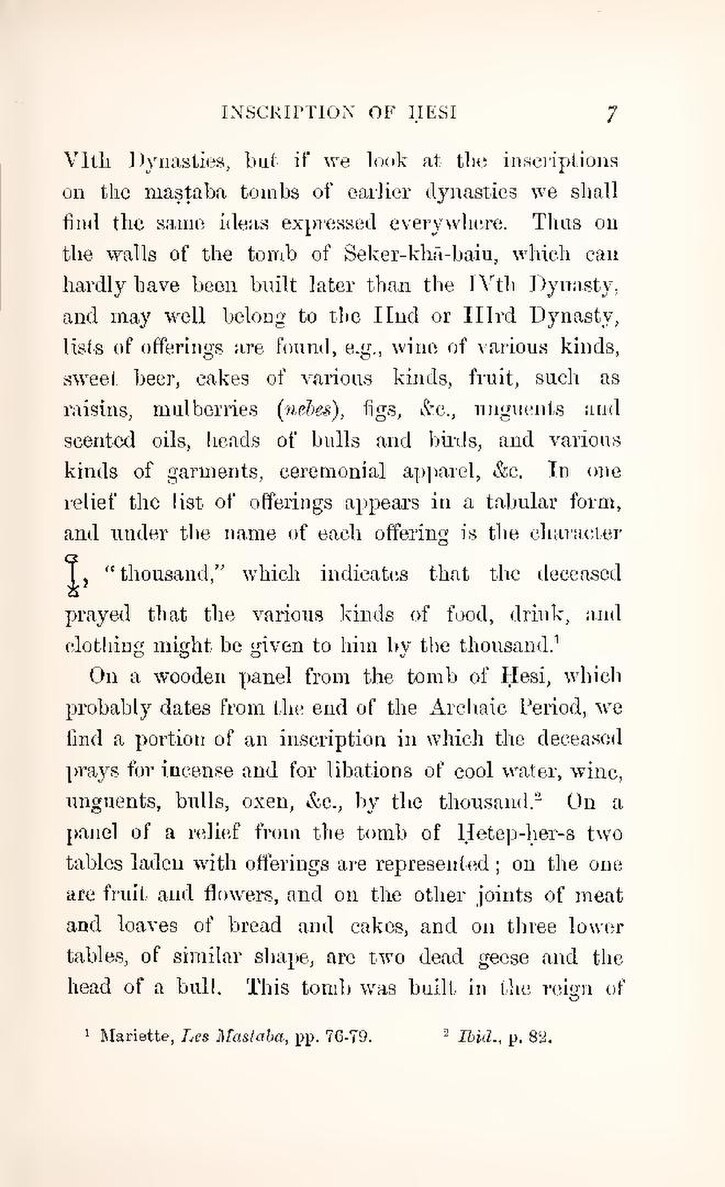VIth Dynasties, but if we look at the inscriptions on the maṣṭaba tombs of earlier dynasties we shall find the same ideas expressed everywhere. Thus on the walls of the tomb of Seker-khā-baiu, which can hardly have been built later than the IVth Dynasty, and may well belong to the IInd or IIIrd Dynasty, lists of offerings are found, e.g., wine of various kinds, sweet beer, cakes of various raisins, mulberries (uebes), figs, &c., unguents and scented oils, heads of bulls and birds, and various kinds of garments, ceremonial apparel, &c. In one relief the list of offerings appears in a tabular form, and under the name of each offering is the character
| |
, “thousand,” which indicates that the deceased prayed that the various kinds of food, drink, and clothing might be given to him by the thousand.[1]
On a wooden panel from the tomb of Ḥesi, which probably dates from the end of the Archaic Period, we find a portion of an inscription in which the deceased prays for incense and for libations of cool water, wine, unguents, bulls, oxen, &c., by the thousand.[2] On a panel of a relief from the tomb of Ḥetep-ḥer-s two tables laden with offerings are represented; on the one are fruit and flowers, and on the other joints of meat and loaves of bread and cakes, and on three lower tables, of similar shape, are two dead geese and the head of a bull. This tomb was built in the reign of
